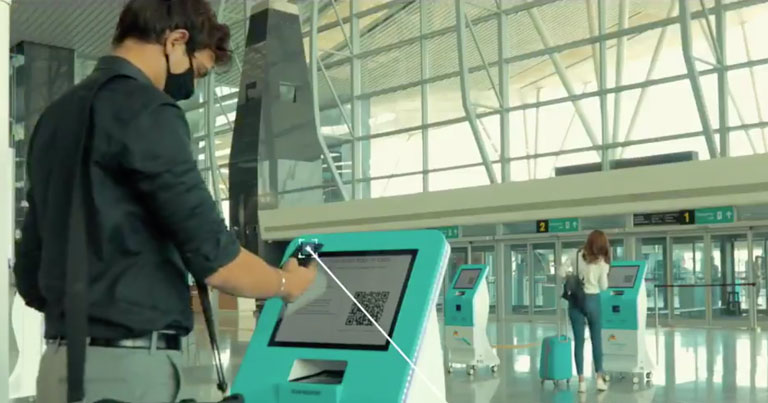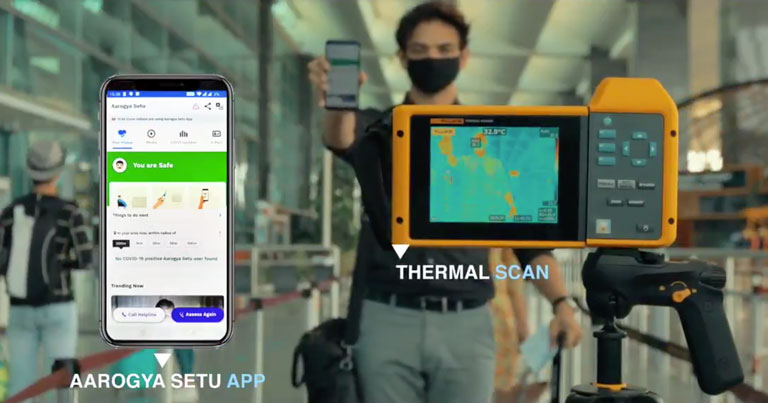
In an effort to protect passengers and staff from the risk of COVID-19 transmission, Bangalore International Airport Limited (BIAL) has introduced a parking-to-boarding contactless journey at Kempegowda International Airport, Bengaluru (BLR Airport).
With greater emphasis on minimum exposure between passengers and airport staff, BIAL aims to minimise all physical contact at the airport. The technology will continue to enable a seamless airport journey, with greater emphasis on health and safety.
Hari Marar, MD & CEO, BIAL, commented: “As the gateway to a new India, BLR Airport has a key role to play in helping passengers through this global health crisis by reassuring them that their safety is our top priority. We have introduced innovative contactless procedures to minimise exposure at the airport. These enhancements demonstrate our continued commitment to keep our passengers safe in this environment. We believe our new measures will boost confidence among passengers.
“BLR Airport is all geared up to welcome our passengers back and – working with various Government departments – we’re committed to offering them a safe experience by implementing the best-in-class standards, procedures and practices,” he added.
As part of the new procedures, passengers are required to wear face masks and carry an e-/printed-boarding pass.

At the departure gates, passengers will undergo thermal scan and must show that the Aarogya Setu app, developed by the Government of India, on the passengers mobile phone has the ‘you are safe’ message. CISF personnel will verify the boarding pass and Government-issued Photo ID using an electronic device or through a magnified glass screen.
Once inside the terminal, the passenger will scan the boarding pass at a contactless self-service kiosk, collect the baggage tag before proceeding to the airline counter to drop-off luggage. Passengers also have the option of using the assisted baggage drop counter to print and tag their baggage. Initially, a maximum of one hand baggage and one checked-in baggage will be allowed, as mandated by India’s Director General of Civil Aviation (DGCA).
The airport has also installed transparent partitions at the airline bag drop counters, to ensure the safety of both customers and airline staff. In addition, passengers will have to follow the safe distance markers placed on the floor. The passenger will scan the boarding pass on a sensor and show their ID and airline staff will accept the bags, ensuring at all times that the boarding pass does not touch the glass screen.
Automated self-bag-drop facilities will also be available, as applicable to the airlines, and passengers will be assisted by airport staff to avoid touching the machines themselves.
In terms of the security process, at the Pre-Embarkation Security Check, the passenger will scan their boarding pass at a kiosk and put all belongings in the tray before going through the body scanner. Trays will be sanitised after every use.
Under the new contactless process, body scanning will be done using Door Frame Metal Detectors (DFMD).
At the boarding gate, the airline staff will hand over a kit containing a face mask, face shield, and sanitiser to the passenger, who must put on the new mask and sanitise hands before boarding. The passenger will scan the boarding pass on the sensor. Airline staff will conduct temperature screening and then permit boarding.
Across the terminal bio-waste collection bins are placed so that passengers can dispose their used mask and other personal protective equipment. Touch-free hand sanitisers have also been placed across the terminal.
Moreover, passengers can experience contactless dining and retail, with almost total elimination of human contact at outlets. Queueing times have also been reduced, as customers can now pre-order F&B through their smartphones using the QR code displayed at the FSTR by BLR kiosks. The food can be delivered at the passenger’s place of choice within the terminal. The payment would be made digitally at the time of ordering. For lounge access, passengers are advised to book their lounge slots online to avoid manual processing at the terminal.
Apart from the contactless process, BIAL has also introduced a slew of other measures, including frequent sanitisation and disinfection of baggage and trollies, and fumigation of the terminal for safe travel. All touchpoints will be sanitised regularly at a predetermined schedule.
https://twitter.com/BLRAirport/status/1264472239916773376
The circumstances surrounding COVID-19 are continuously evolving. Our friends at APEX have a dedicated COVID-19 page, which they’ll be updating regularly to help keep you up-to-date on how the novel coronavirus is impacting the aviation industry. Visit the page for the very latest news >>





